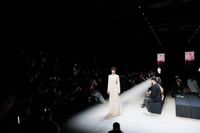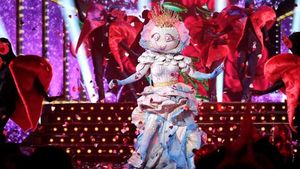From March 13 to March 18, 2025, the IV Moscow Fashion Week showcased a remarkable trend towards Russian ethno-style within modern Russian fashion. The event attracted significant attention, filling venues with enthusiastic audiences and a bustling market for designer goods.
During the week, 180 designers from various countries, including South Africa, China, the USA, India, Armenia, and Turkey, presented their work, highlighting the global appeal and richness of the fashion landscape. Among the standout collections was the brand Vereja, which opened the show with its 'Peasant Patterns' collection, drawing inspiration from traditional Russian beliefs. This collection featured woven amulets intended to symbolize protection from evil forces, effectively merging cultural elements into contemporary fashion.
Throughout the event, attendees were not only treated to stunning runway displays but also engaging lectures exploring the historical significance of Russian fashion. Expert discussions shed light on how Russian fashion served as a marker of identity from the early 20th century, particularly following the creative impact of Russian ballets and the subsequent wave of emigration.
Historically, the influence of Russian styles reached far back as the early 19th century. Following the Patriotic War of 1812, Russian soldiers’ entrance into Paris set off trends, leading to a fashion embrace of казак (Cossack) styled trousers as early as 1814. This early adoption demonstrates the longstanding allure of Russian aesthetics in global fashion circles.
Designers like Yves Saint Laurent and Coco Chanel found deep inspiration in what they termed the загадочная Russian soul. Chanel, in particular, infused her collections with Russian motifs, such as her rubashki La Rus embellished with intricate hand embroidery and luxurious coats with sable linings. The very bottle of her iconic Chanel No. 5 was even said to resemble a шtoф (flask) of Russian vodka, symbolizing the intertwining of Russian culture and high fashion.
In spring 2022, the fashion world was captivated by a striking photoshoot from Dior, which showcased models clad in delicate кружевных (lace) dresses pose against the backdrop of swaying Russian birch trees, further accentuating this unique blend of heritage and modernity.
As Moscow Fashion Week drew to a close, the finale featured a show by Sergey Sysoev that celebrated folk style through a contemporary lens. The event culminated in a showcase that resonated with both Russian and global participants in the fashion industry, who acknowledged the depth of cultural interpretation and the modern reimagining of traditional images.
Notably, from the 1920s onward, around 20 fashion houses in Paris embraced and promoted the Russian style extensively. Karl Lagerfeld’s collection 'Paris – Moscou' in 2008 presented lavish pieces made from sable and каракулевые (karakul) furs, incorporating traditional Russian patterns and styles like кокошники, commonly associated with Russian nobility.
Ralph Lauren’s autumn 2013 collection showcased deep-colored бархат (velvet) clothing reminiscent of Russian designs, complete with items reflecting казаки (Cossack) outfits and fur hats. Valentino and Dolce & Gabbana, among other prominent brands, have drawn on Russian folklore in their recent collections, ensuring that the allure of Russian culture continues to thrive in modern fashion.
Fashion historians point to the significant contributions of Russian creatives, pioneering innovations that reshaped global trends. For instance, they note that Russian designers were responsible for creating the first versions of the modern бюстгальтер (bra), integrating elements from ballet into women’s lingerie designs.
Additionally, the influence of projects like Sergei Diaghilev’s Russian Seasons in Paris—which celebrated Russian ballet and architecture—led French designers to adopt styles reminiscent of Russian work, including garments inspired by the romanticism of illustrated Russian fairy tales.
In conclusion, the IV Moscow Fashion Week did not only reflect the rich traditional practices inherent in Russian culture but also illustrated the ongoing and evolving dialogue between the past and present in fashion. The celebration of Russian ethno-style demonstrated that this deeply rooted cultural heritage continues to inspire contemporary designers worldwide, affirming its place in the fabric of international fashion culture.





